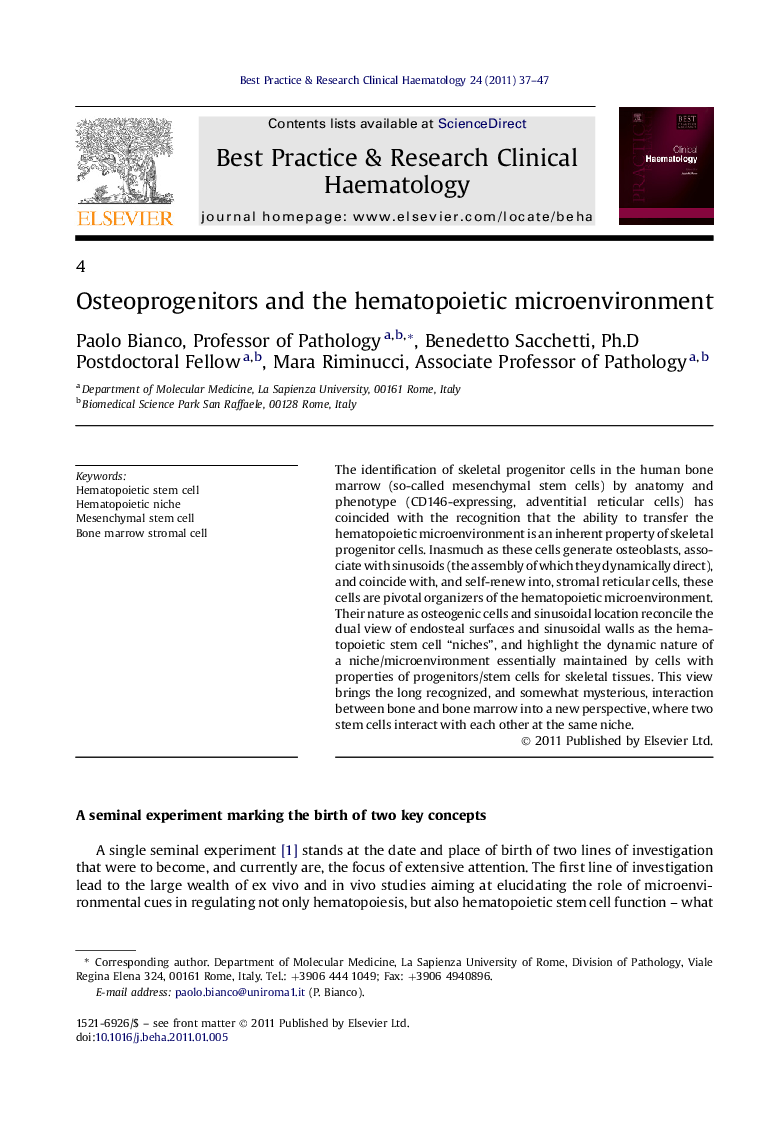| Article ID | Journal | Published Year | Pages | File Type |
|---|---|---|---|---|
| 2100300 | Best Practice & Research Clinical Haematology | 2011 | 11 Pages |
The identification of skeletal progenitor cells in the human bone marrow (so-called mesenchymal stem cells) by anatomy and phenotype (CD146-expressing, adventitial reticular cells) has coincided with the recognition that the ability to transfer the hematopoietic microenvironment is an inherent property of skeletal progenitor cells. Inasmuch as these cells generate osteoblasts, associate with sinusoids (the assembly of which they dynamically direct), and coincide with, and self-renew into, stromal reticular cells, these cells are pivotal organizers of the hematopoietic microenvironment. Their nature as osteogenic cells and sinusoidal location reconcile the dual view of endosteal surfaces and sinusoidal walls as the hematopoietic stem cell “niches”, and highlight the dynamic nature of a niche/microenvironment essentially maintained by cells with properties of progenitors/stem cells for skeletal tissues. This view brings the long recognized, and somewhat mysterious, interaction between bone and bone marrow into a new perspective, where two stem cells interact with each other at the same niche.
